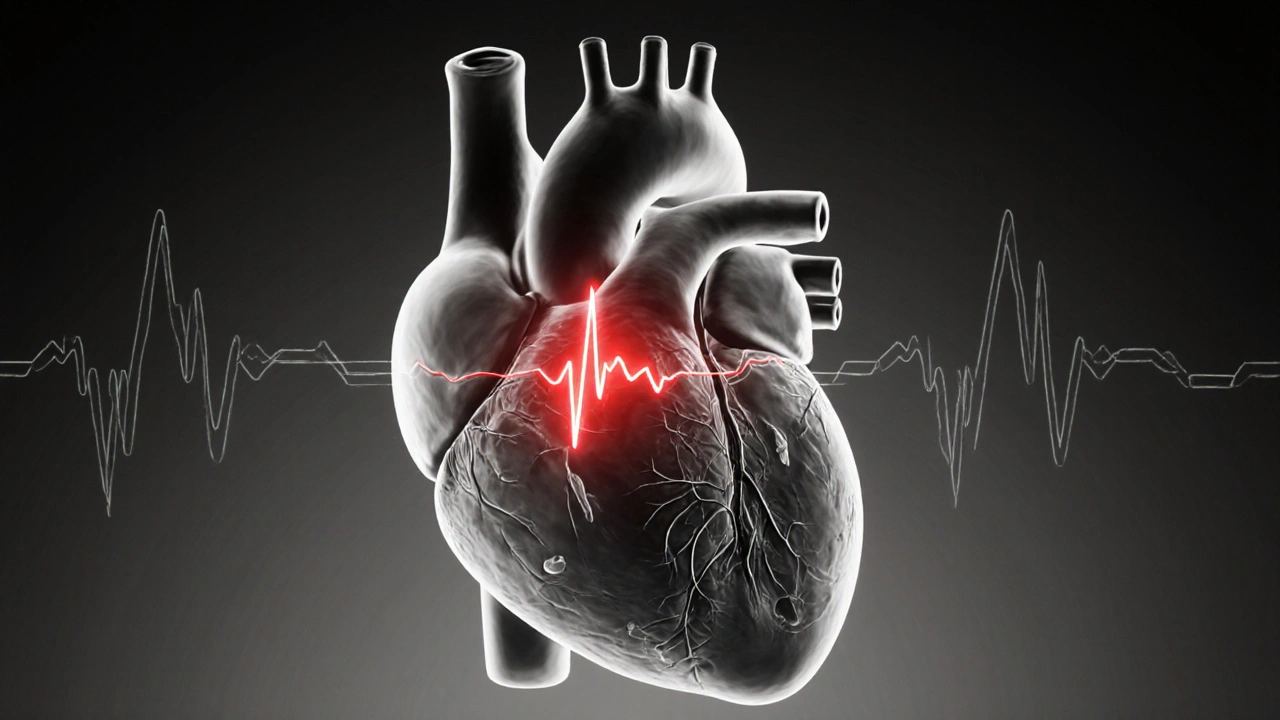SVT Treatment: What Works and Why
When dealing with SVT treatment, a set of medical and procedural approaches aimed at controlling rapid heart rhythms that originate above the ventricles. Also known as supraventricular tachycardia therapy, it focuses on restoring a normal heart rate, preventing episodes, and reducing symptoms like palpitations, dizziness, or shortness of breath. Understanding the core concepts behind SVT treatment helps you choose the right path, whether you prefer medication, a minimally invasive procedure, or lifestyle tweaks.
Key Treatment Options
One of the most common first‑line choices is beta blockers, drugs that slow the heart by blocking adrenaline’s effect on the beta‑adrenergic receptors. They reduce the frequency of SVT episodes and are especially useful for patients who experience frequent bursts triggered by stress or caffeine. Beta blockers also lower blood pressure, which can further decrease the likelihood of an arrhythmic event. Because they target the same receptor pathways that drive rapid heartbeats, SVT treatment often starts with a beta blocker trial before moving to stronger options.
When beta blockers aren’t enough, clinicians turn to antiarrhythmic drugs, medications that modify the electrical properties of heart cells to prevent abnormal rhythm propagation. Examples include flecainide, propafenone, and amiodarone. These agents work by stabilizing the cardiac action potential, thereby interrupting the re‑entrant circuits that cause SVT. While more potent, they come with a higher side‑effect profile, so careful dosing and regular follow‑up are essential. Antiarrhythmic drugs expand the toolbox of SVT treatment, especially for patients with contraindications to beta blockers.
If medicines fail or the patient prefers a definitive fix, catheter ablation, a minimally invasive procedure that uses radiofrequency energy or cryotherapy to destroy the small area of heart tissue triggering the tachycardia, becomes the go‑to option. During an electrophysiology study, the doctor maps the abnormal pathway and then delivers energy to isolate it. Success rates exceed 90 % for many SVT subtypes, and the recovery time is usually just a few days. In the semantic chain, catheter ablation completes the SVT treatment continuum by offering a permanent solution when drugs can’t provide control.
All of the above options are typically guided by an electrophysiology study, a diagnostic test that records the heart’s electrical activity and pinpoints the exact mechanism of the tachycardia. The study not only confirms the SVT diagnosis but also determines whether the arrhythmia is AV nodal re‑entrant tachycardia, atrial tachycardia, or another subtype. Knowing the precise mechanism helps clinicians pick the most effective medication or decide if ablation is warranted. In short, the electrophysiology study links diagnosis to treatment, making the whole SVT treatment plan more personalized.
Beyond drugs and procedures, lifestyle adjustments play a supporting role. Reducing caffeine, alcohol, and nicotine intake can lower the trigger threshold. Regular aerobic exercise improves overall heart health and may blunt the sympathetic spikes that precipitate SVT. Stress‑management techniques—such as deep‑breathing, yoga, or mindfulness—help keep adrenaline levels in check, complementing medication effects. While lifestyle changes alone rarely cure SVT, they reinforce the primary treatment and often lessen the need for higher drug doses.
With a clear picture of the main therapeutic avenues—beta blockers, antiarrhythmic drugs, catheter ablation, and the guiding electrophysiology study—you’re ready to explore the detailed guides below. Each article dives into practical steps, dosage tips, safety considerations, and real‑world experiences, giving you the confidence to work with your doctor and choose the best path for your heart.
Amiodarone Effectiveness for Supraventricular Tachycardia: Benefits, Risks & Dosing
- Laura Ledas
- Sep, 6 2025
Explore how Amiodarone works for supraventricular tachycardia, its success rates, dosing guidelines, side‑effects, and how it stacks up against other rhythm drugs.
Learn More